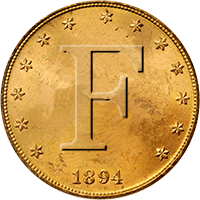I really like it. Aside from getting closer to playground equipment and tight spaces, the audio is very crisp/sharp and reminds me a lot of the old analog metal detectors. As is usually the case, smaller coils can give better ID as they don't have to deal with as much mass of material containing minerals. It is noticeably lighter too.

I ran it in 25 kHz zero discrimination, as that's the best combination to get decent ID on my rusting coins. The pixels are what really makes this detector work for me. They really help define iffy signals to be coins or junk. Unfortunately, I can not use the bottle cap reject, as I would lose a lot of my coins.

After an hour or so, I went to a river, which is also my gold producer. I worked along the edge, in the water and over previous tailing piles. I switched to multi-frequency zero discrimination, as I was getting better ID and better depth. Hunting in wet gravel adds hot rocks, magnetite and just more ferrous targets. The slimmer size of this coil really shines dissecting targets amongst the constant mineralization and iron targets. The river only produces flour gold, so metal detectors just don't respond to it.

This was my first strong signal......in the 60's at the water's edge. That got me pretty excited.......only to find out that is wasn't real gold. I love the suspense!

I got a strong signal in the 80's, and down about 10" I dug up what appears to be a radio face plate cover from an older car. Any guesses?

They were calling for thunder showers (which we got) so I brought along my "Batea" gold pan. These are common in many other parts of the world and have been used for over 2,000 years.

Here's the gold I got panning for about 40 minutes. The coil is a keeper on the VORTEX. Good depth, nice crisp clear analog like audio with great separation and fits into tight spots. I like it! Dire Straits kind of a day .......... " money for nothing get your gold for free."
I ran it in 25 kHz zero discrimination, as that's the best combination to get decent ID on my rusting coins. The pixels are what really makes this detector work for me. They really help define iffy signals to be coins or junk. Unfortunately, I can not use the bottle cap reject, as I would lose a lot of my coins.
After an hour or so, I went to a river, which is also my gold producer. I worked along the edge, in the water and over previous tailing piles. I switched to multi-frequency zero discrimination, as I was getting better ID and better depth. Hunting in wet gravel adds hot rocks, magnetite and just more ferrous targets. The slimmer size of this coil really shines dissecting targets amongst the constant mineralization and iron targets. The river only produces flour gold, so metal detectors just don't respond to it.
This was my first strong signal......in the 60's at the water's edge. That got me pretty excited.......only to find out that is wasn't real gold. I love the suspense!
I got a strong signal in the 80's, and down about 10" I dug up what appears to be a radio face plate cover from an older car. Any guesses?
They were calling for thunder showers (which we got) so I brought along my "Batea" gold pan. These are common in many other parts of the world and have been used for over 2,000 years.
Here's the gold I got panning for about 40 minutes. The coil is a keeper on the VORTEX. Good depth, nice crisp clear analog like audio with great separation and fits into tight spots. I like it! Dire Straits kind of a day .......... " money for nothing get your gold for free."


